Iconic...
Forgotten...
Timeless...
Innovative...
These are the soundtracks that helped shape and define what we hear in the video games that we play. I am Nitro, and this is the M Disk Playlist's Video Game Music Primer: 1999.


Silent Hill (PlayStation), composed by Akira Yamaoka and Rika Muranaka
As soon as you heard that mandolin in the beginning, you knew right away you were in for something special. Resident Evil had dominated the survival horror genre for nearly the entire decade. Right at the end of that decade, Silent Hill would come and give the genre a different and possibly more terrifying take on the genre. The horror wasn't represented by something straight out of George Romero films. It was the unseen, it was the ambience, it was the grotesque, and a lot of it was driven by the music of Akira Yamaoka.
He didn't just compose the music, he did all of the audio work as well. And he was the first to volunteer for the opportunity to work on Silent Hill because he strongly believed he was the only one capable of giving Silent Hill the experience it deserved. He drew inspiration from Twin Peaks composer Angelo Badalamenti, and industrial music to create the music, which was far more ambient than melodic. In fact, nearly the entire soundtrack could be viewed as one very long piece if listened to back to back. Some of the music was so creepy and atmospheric, the Konami staff thought that the audio was glitched. When Yamaoka explained that his compositions sounded the way they did on purpose, they allowed him to continue. He didn't rely on visuals to help him compose. He composed everything separately.
The only piece not to be composed by Yamaoka was one of the ending themes, Esperandote. Rika Muranaka had already written music for Konami hits Symphony of the Night, and Metal Gear Solid at that point of her career. The vocals were performed entirely in Spanish by Vanesa Quiroz. The song was written in English, and translated into Spanish. But because of the English to Spanish translation, the melody did not match the lyrics. Fortunately, it only took Muranaka five minutes to revise the lyrics to match the melody.
Akira Yamaoka had been working for Konami since 1993 with his first games being Contra: Hard Corps, and the Rocket Knight Adventure games. It wasn't until Silent Hill where he established himself as one of Konami's most prominent composers. By creating some of the most terrifying audio heard in a video game, he literally defined the experience of Silent Hill more than any other composer could define the experiences of the games they composed.
Final Fantasy VIII (PlayStation), composed by Nobuo Uematsu
With every new hardware he worked on, and with every new Final Fantasy he composed, he would continue to evolve his own composition style, and raise the bar for role playing game music. Final Fantasy VII sacrificed audio quality to ensure that the game could load quicker. This time, there was little compromise in the audio. Everything sounded much more realistic than his previous work. In an interview with Polygon in 2017, Uematsu suggested that listening to to the music of the Suikoden series inspired him to have a different view on the audio quality of his works in games at that point.
For this game, Uematsu wanted to channel the emotions conveyed by the characters and the story.
Even going so far as to suggesting that the emotions expressed through the music were more important than the skills behind them. For the first time since Final Fantasy V, Uematsu was able to use music to express the idea of the characters and their emotions, something that he felt he couldn't achieve with the soundtracks to six and seven. One of the main plots of Final Fantasy VIII is the relationship between Squall and Rinoa. Their relationship inspired the iconic vocal piece, Eyes on Me. Vocal pieces had been used before in video games, so it wasn't the most innovative addition to the soundtrack. However, Eyes on Me ended up becoming the most successful vocal theme in a video game released in the 90s, raising and setting the bar for vocal themes in future game releases. Chinese vocalist Faye Wong was chosen to perform this song because her vocals, and how she expressed her emotions in song matched what he wanted from Eyes on Me. It wasn't just an inset song to be heard in a specific spot of the game, it was also a plot device during the story segments involving Laguna, and Julia.
Eyes on Me wasn't the only vocal piece, however. The game immediately begins with a strong orchestra/choir piece, Liberi Fatali. The lyrics are performed in Latin, but the signature phrase "fithos lusec wecos vinosec" is not a real Latin phrase. It is actually an anagram of the word love, and the phrase "succession of witches." There is another piece in the soundtrack titled Fithos Lusec Wecos Vinosec that plays during Edea's parade. This piece is also notible outside of the game, as it was used during the 2004 summer olympics for Alison Bartosik and Anna Kozlova's bronze winning synchronized swimming performance.
Music is even used as a minor side-plot in the game. When the protagonist group is preparing for the Garden Festival, Selphie and Irvine attempt to form a band with the protagonists, except Squall and Rinoa. You can pair a character with an instrument, and the result will be one of three...a performance of Eyes on Me, an Irish jig, or a cacophany of the two possible scenarios.
As much of a departure it was for the series, it ended up being one of Uematsu's most evolved soundtracks. With a higher quality sound, more opportunities were presented to give the Final Fantasy series the kind of music it hadn't experienced before, setting the standard for future Final Fantasy titles to follow.

Following the success of PaRapper the Rapper, work was done to produce a sequel that captured the hearts and ear worms of gamers who were captivated by Matsura's innovation to video games. But this wasn't an ordinary sequel. Um Jammer Lammy would be a different experience that shared the same PaRappa gameplay. Instead of Parappa, you play guitarist Lammy. Instead of doing a mutually verbal call-and-response rap between you and your stage mentor, the mentor gives you a verbal call, and Lammy responds with a guitar riff. It still played like Parappa, but the music this time around was a combination of rock and rap. Lammy was voiced by Sara Ramirez. This was one of her first major acting roles. She has since gone on to to be an award winning actess, winning awards such as a Tony for her role in the broadway show Monty Python's Spamalot, and a Screen Actores Guild Award for her work on the television show, Grey's Anatomy.
Returning to help with the music is Ryu Watabe. He reprises his role as Chop Chop Master Onion from the first game. Michele Burks, who voiced Katy Kat in the first game reprises her role for this one, in a much bigger role, as one of the founding members of Lammy's band, Milk-Can. Some liberties were taken to ensure that this game would receive an E for Everyone rating in North America. The lyrics to the song Power On, Power Off were altered so that the song doesn't appear to condone deforestation. And the set up for stage 6, Taste of Teriyaki, changed from Lammy dying and going to hell to being suddenly whisked away to a volcanic island on a fluke.
This game wasn't all about Lammy though. After beating the main game, you unlocked a mode where you could play through all the stages again as PaRappa the Rapper himself, following the traditional verbal call-and-response that helped propell the first game's success. In addition to that, Um Jammer Lammy also offered a multiplayer mode. In this mode, two players can play as one of three characters; Lammy, PaRappa, and Lammy's rival, Rammy. Thus, adding a lot more replay value to this game, and more variations to the game's vocal pieces than in the first game.
Um Jammer Lammy didn't quite achieve the legacy that PaRappa the Rapper did. But Um Jammer Lammy did add to the franchise. It incorporated the rock genre, it offered the hip hop genre for those who didn't want to feel left out, it offered both at the same time, and it offered the opportunity for more than one person to enjoy the works of Masaya Matsura.
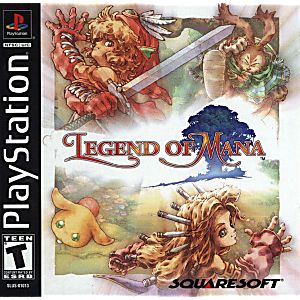
Legend of Mana (Playstation), composed by Yoko Shimomura
Hiroki Kikuta may have innovated what we heard in the Seiken Densetsu series, but when Yoko Shimomura took over the role of primary composer for the franchise, she took the sounds of
Mana to a new level. Legend of Mana was described by Shimomura herself in a 2002 interview with RocketBaby as the soundtrack that best expressed herself. Shimomura had been playing the piano since she was a child, and had always aspired to write music for video games. Specifically, role playing games. She started her video game music career at Capcom working on several of their arcade titles, one of them most notably being Street Fighter II. Then she moved on to Square where she was given the opportunity to compose for the genre she had always dreamed of working on, fantasy role playing games. Her first RPG scores were Live a Live and Super Mario RPG, both for the Super Nintendo. It wasn't until Legend of Mana came around where she could fully express herself.
She had already gained experience working with the sounds of the PlayStation through Parasite Eve. But her approach to that game was more of an exprimental one. With Legend of Mana, her feelings towards fantasy games came together with a system that gave her the highest quality sounds to work with at that point of her career. While Hiroki Kikuta's approach to the Sekien Densetsu games was more eclectic, light hearted, and upbeat; Shimomura's was more ambient, etheral, and soothing. And for the first time in the franchise, vocals were provided. The ending theme, Song of Mana, was performed by Swedish vocalist Annika Ljungberg of the Sweedish electronic country group, Rednex. Like what she did in Parasite Eve, Shimomura wanted to use a vocalist that wasn't popular.
Shimomura was so enamoured with Ljungberg's vocals, that she flew to Sweeden as soon as she could to do an analog recording of the song. Song of Mana starts off as a vocalized arrangement of the game's opening theme, named after the game itself. Having part of the ending theme be a callback to the opening theme allowed the experience of playing this game to come full circle.
Fantasy was always Yoko Shimomura's forte, and she knew it. Legend of Mana was her opportunity to express what she could bring musically to the fantasy genre with less limitations than the ones she faced when working on the Super Nintendo.

SoulCalibur (Dreamcast), composed by the Namco "SoulCalibur" Sound Team
Fighting game music usually leans towards the rock and electronic music genre's. Not this game. SoulCalibur, the game that helped define the Sega Dreamcast as the pinnacle of the next generation of gaming consoles, had a more dramatic sound to enhance the fighting game experience. Although a live orchestra wasn't used, it was the closest to an orchestrated soundtrack that a fighting game had come to at the time.
Leading the sound team at Namco was Junichi Nakatsuru, in his first composition job at Namco. He has been involved with every SoulCalibur game in the franchise. As a child, he took piano lessons, and learned how to play music by composing his own arrangements of popular music. He studied music in school, and although he was part of different bands in his youth, he was more interested in composing than playing. One of his biggest inspirations on his career was John Williams' score for Star Wars Episode 1: The Phantom Menace. Other members of the sound team that contributed to the soundtrack were Yoshihito Yano, Akitaka Tohyama, Takanori Otsuka, and Hideki Tobeta. Together, these composers have worked on some of Namco's other big name franchises, like the Katamari franchise, and Namco's other popular fighting franchise, Tekken.
As stated earlier, SoulCalibur was a defining moment for the Dreamcast. It stood out as doing something that fighting games on consoles could never do at the time, surpass the original arcade version. Namco had always beefed up console ports of their fighting games with exclusive modes and features. SoulCalibur did that, but with the hardware of the Dreamcast, Namco was able to push all the visuals to a level beyond what the arcade was capable of. It was very rare for a fighting game to be considered game of the year worthy, but SoulCalibur elevated itself to such a tier when it was released due to taking advantage of a hardware that was far advanced than any console out in the market at the time.
SoulCalibur evolved the fighting game experience, set a new standard for how games should look and feel, and how arcade experiences should be transferred to the home console. Junichi Nakatsuru's music, and passion for orchestrated sounds help make SoulCalibur stand out even more as a fighting game. With it's more dramatic sound, as opposed to sound that paralleled what was "hip" at the time, every duel between the fighters felt like an important battle to the death.
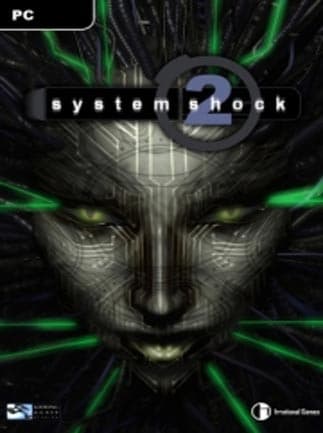
System Shock 2 (PC), composed by Josh Randall, and Ramin Djawadi
This soundtrack is fast paced, intense, exciting. If you didn't know where the music came from, it would be easy to assume that this came from an action game. But nope. This is a soundtrack to a horror game. And it works. You are in a space colony in the cyberpunk future, the Von Braun. You are fighting machines and mutants alike, many of which took over the ship against the will of their creator, SHODAN. The music is just a mask to disguise the true horrors of the world around you. On top of the up beat electronic music, you'll hear ghastly moans, menacing dialogue, and the sounds of your enemies as they attempt to kill everything and anything around them.
Ramin Djawadi studied music in the Berklee College of Music, earning summa cum laude honors in 1998, eventually finding work for Hans Zimmer's score company, Remote Control Productions. System Shock 2 was one of his first scores, but he has since gone on to define his career in memorable films like the first Iron Man, the Clash of the Titans remake, Pacific Rim, and his most recent film score as of this production, A Wrinkle in Time. He has also worked on television scores like Prison Break, Game of Thrones, and Westworld. In an interview with Business Insider, Djawadi reveals that he's been diagnosed as having synesthesia, defined by webmd as experiencing one of your senses through another. He goes on to elaborate his condition as where he can associate music with colors, and vice versa. While Josh Randall's roots can't be traced to Hollywood, his resume is still an impressive one. Under the alias Robotkid, he has made a name for himself as one of the creative directors for game developer Harmonix. Harmonix has been responsible for some of the western market's most memorable music games like Frequency, Karaoke Revolution, Guitar Hero, and Rock Band.
System Shock 2 defined horror by providing a contrast of visuals, and defining the experience with some of horror gaming's most memorable encounters. All these visuals, and terrors would serve as the foundation for another innovation to the horror game genre that would come eight years later, BioShock.
Chrono Cross (Playstation), composed by Yasunori Mitsuda
Yasunori Mitsuda made one of the strongest debuts in video games with his work on Chrono Trigger. And to think that he got the job to compose the game by telling Square "let me compose, or I quit." He would remain an integral part of the series by coming back to compose for the text-based visual novel Radical Dreamers, released on Super Famicom's Satellaview.
Radical Dreamers would serve as the main inspiration for the 2000 release, Chrono Cross, with many of the pieces from Radical Dreamers arranged for the Chrono Cross soundtrack. Leitmotifs from Chrono Trigger were also reused for the Chrono Cross soundtrack. Lucca's theme became a victory theme for battle, and you would occasionally hear snippits of Crono's theme in the game, just like in Chrono Trigger.
Mitsuda had left Square after finishing work on Xenogears, becoming a freelance composer. Masato Kato, Chrono Cross director who worked on Chrono Trigger with Mitsuda as a script writer and story planner, needed what he described as "that one and only Chrono sound." He knew that Mitsuda and him would be able to work well together without having to explain much to each other in order to bring Chrono Cross to life through music and sound. Chrono Cross was initially viewed as an odd entry to the Chrono series. It wasn't a sequel to Trigger, and it wans't a remake of Radical Dreamers.
So what was it? While Chrono Trigger was about time travel, Chrono Cross was about alternate realities. Cross explored an alternate reality of how the events of Trigger affected the in-game world. The presentation was very ambiguous, and vague in parts. It ended up being one of those games that you had to experience for yourself to tryly emerse yourself into the story.
The ending theme, Radical Dreamers The Unstolen Jewel, was the toughest for Mitsuda to compose. Mitsuda knew he wanted the song to be performed in Japanese, but had a tough time figuring out who would sing the song. In the end, director Kato chose Noriko Mitose. She was primarily known for her work in doujin games. But after Chrono Cross, she would become more recognized for her works as a vocalist for the Ar tonelico and Atelier franchises. The guitar in the song is performed by Tomohiko Kira, who also played the guitar in the beginning piece, Scars of Time. Kira had also worked with Mitsuda on the Xenogears soundtrack.
The music for Cross was emotionally investing. There are a few adventurous and exciting themes (like the battle themes, and Scars of Time), but a large portion of the soundtrack was more moving than anything else. With Xenogears, Mitsuda started to compose music that would tug at the heart strings. But it is his work on Chrono Cross that takes emotional music to a level unprecedented at the time.

Pokemon Gold/Silver (Game Boy Color), composed by Junichi Masuda, Morikazu Aoki, and Go Ichinose
So much went into the creation of the sequel to the first game. More original Pokemon, more music, and it would be a game that, thanks to the late Satoru Iwata, allowed you to play through both the entire game in the brand new Johto reigon, as well as the entire Kanto reigon from the first game, all in one cart without any compromise to any data. It was truly one of the largest Game Boy games on the market.
Pokemon Gold and Silver, as a much bigger game than its predecessor, would need a much bigger soundtrack. 270 pieces to be exact. And that soundtrack would be helmed by three composers instead of just Masuda, like before. This time, he was joined by newcomers Morikazu Aoki and Go Ichinose. Aoki was a prominant part of the audio department for the generation 2 Pokemon games, the generation 3 Pokemon games, and briefly in the generation 4 Pokemon games. He left Pokemon developer Game Freak to work on the Mario & Luigi series with the company AlphaDream. Ichinose remained with the Pokemon franchise all the way into the seventh generation of Pokemon games. In addition to the Pokemon franchise, he also worked on Game Freak's Drill Dozer, and Pocket Card Jocky. Masuda has been with the Pokemon franchise since the very beginning. In the first game, he was a programmer and composer. In Gold and Silver, he served as the assistant director to Satoshi Taijiri. All the music was composed on an Amiga computer, then converted to the MIDI format, and then converted again to support the Game Boy.
Pokemon Gold and Silver had a lot of effort poured into it from all levels of development. Programming, sound, gameplay, and story. They were all amped up in a way to max out the potential of the Game Boy. Masuda continued to be an integral member of the Pokemon development team. He demonstrated his ability to direct a Pokemon title with the Gold and Silver games, serving as a preview of what we could expect from the next generation of Pokemon games, where he would serve as both the primary composer and primary director.

Donkey Kong 64 (Nintendo 64), composed by Grant Kirkhope
After you get your logos, reminding you of who made this game, you get one of the most polarizing vocal pieces in 90s gaming. The DK Rap, composed by Kirkhope and performed by George Andreas and Chris Sutherland, immediately introduces you to a soundtrack that uses fun and humor to enhance the gaming experience, which is what Kirkhope had already achieved with Banjo-Kazooie. Kirkhope viewed the DK Rap as something he did as a joke, due to how popular the rap genre had become in the 90s.
After the successful soundtrack to Banjo-Kazooie, Kirkhope brought more of that dynamic, humorous, fun music to this game. It completely replaces the more atmospheric soundtracks from David Wise that made Rare's Donkey Kong franchise such a stand out. But to be fair, Kirkhope had far more experience with Rare games on the Nintendo 64 than Wise did. And Rare's platformers at the time didn't take itself too seriously. So Kirkhope's style of music was just as good of a fit for Donkey Kong's jump to the Nintendo 64 as he was with Banjo-Kazooie. Kirkhope was also one of many Rare composers who got to do voice over work for this game, performing as Donkey Kong. Not garbled voices like in Banjo-Kazooie, but fully scripted dialogues were recorded for the first time in Rare's video game catalog.
Donkey Kong 64 also enhances the traditions of platformer games of the Nintendo 64 era by adding many more different items to collect, some of which could only be collected by one of five playable characters. This was either viewed as a great thing, or a bad thing. Nintendo 64 platform games were notable for requiring players to collect various items to progress through the game. But with Donkey Kong 64, that formula started to feel more like a chore to some, thus resulting in some gamers eyes as the game that made "collect-a-thon" style gameplay less popular. It also didn't help that this was the first Nintendo 64 game to require the expansion pak, due to what programmer Chris Marlow described as a measure to prevent the game from crashing unexpectedly. This requirement, on top of the collect-a-thon style gameplay resulted in Donkey Kong 64 being one of Rare's more polarizing titles.
Regardless of how the gameplay of Donkey Kong 64 was viewed, and how much memory was required for the game to run properly, Donkey Kong 64 was still highly regarded for its music. Kirkhope's Nintendo 64 resume continued to build. From GoldenEye to this game, Kirkhope was responsible for many of the Nintendo 64's most memorable soundtracks. And he still had more to offer the system even after the release of this game.
Space Channel 5 (Dreamcast), composed by Naofumi Hataya, and Kenichi Tokoi
Sega wanted to make a game that appealed to everyone, specifically the female demographic. When producer Tetsuya Mizuguchi talked to female gamers, he learned that the majority of them enjoyed puzzle games, in contrast to male gamers who were more competitive in nature, and wanted simply to be the best at whatever they played. Based on his research, he was able to come up with Space Channel 5, combining the music game genre with simon says style gameplay that was both fun, and a challenge. The challenge comes in part by Mizuguchi's inspiration of dance troupe Stomp, which sometimes made the game more challenging than fun.
Space Channel 5 tells the story of reporter Ulala who must use rhythm to boost ratings on her station while preventing a widespread epidemic of forced dancing at the hands of the Molorians. Ulala is played by, and inspired by performer and dancer Apollo Smile. Apollo Smile was a performer under A&M Records, and then DGC Records. In the mid 90s, she shifted her career to the anime industry, where she made a name for herself as the live action anime girl, and eventual host of the Sci-Fi Channel's Saturday Anime block. Space Channel 5 also features another performer, Michael Jackson. Michael Jackson already had a resume with Sega, with the game Moonwalker, and he had been involved with the development of Sonic the Hedgehog 3's soundtrack. Although the extent of his involvement with Sonic 3 is debatable, his role in Space Channel 5 is much less complicated to figure out. As Space Channel 5 reached the halfway point of development, Jackson contacted Sega expressing interest in being part of the game. Despite how late in development the game was, they managed to come up with a way to put Michael Jackson in the game, by creating the character Space Michael. Space Michael's role in Space Channel 5 is small. However, in the sequel, Space Channel 5: Part 2, his role becomes much more prominent.
The primary composer for the game was Kenichi Tokoi. He joined Sega working on the game Daytona USA Championship Circuit Edition. His opportunities were more limited than other Sega composers at the time. It wasn't until Sega worked on the Dreamcast where he started to shine, with his works on the Sonic Adventure series, and of course, the Space Channel 5 series, where he prominently showcases his signature jazz style of composition. He was joined by Naofumi Hataya, who had been with Sega since the 90s. He worked on multiple Sega games over the years, including games highlighted in previous primer episodes Nights into Dreams, and the original Sonic CD soundtrack.
Space Channel 5 was a music game for the ages. Not since Parappa the Rapper did a music game feature talent from a composition standpoint, and a performance standpoint. With gameplay that challenged more than excited, Space Channel 5 set itself apart as a music game that innovated its genre, and raised the bar for other music games to follow.

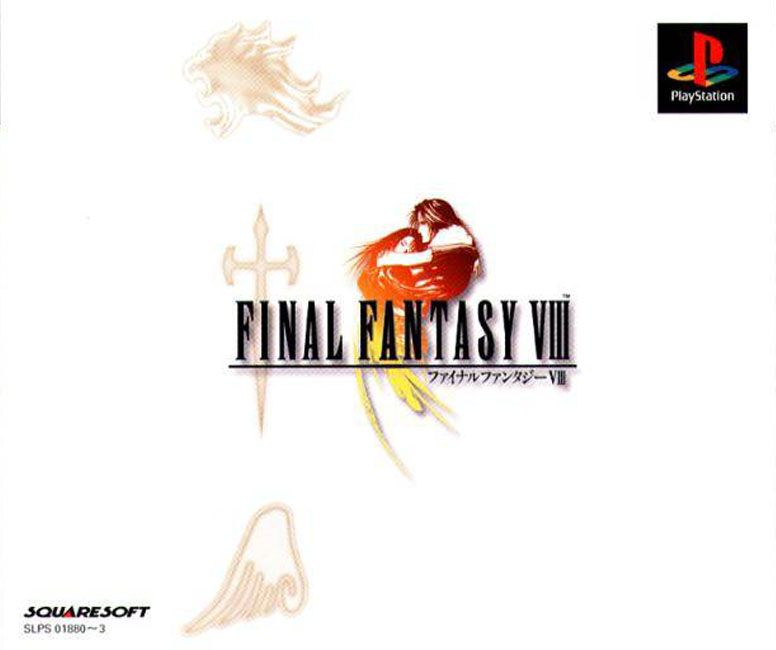
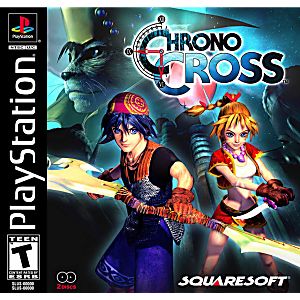
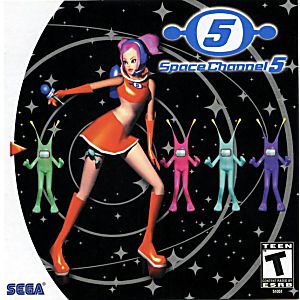
No comments:
Post a Comment